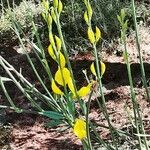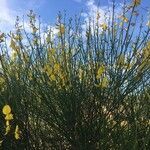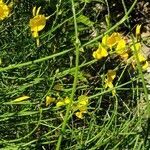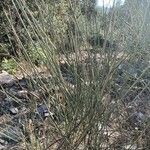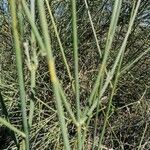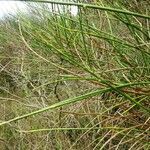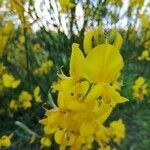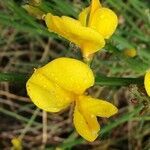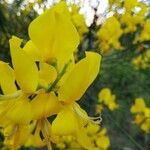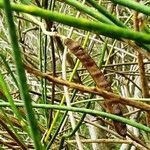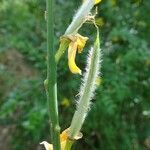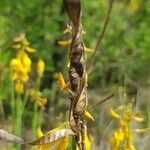Unarmed shrub, 1.5-4.0 m high. Branches slender, long, ascending, often leafless. Leaves rare, unifoliolate, blue-green, silky beneath. Inflorescences of many-flowered, terminal racemes. Flowers showy, bright yellow. Flowering time Aug.-Nov. Pod brown, linear-oblong, tomentose, flattened, dehiscent, 2-valved. Seeds many.
A deciduous shrub. It grows 2.5-3 m high and 2.2-3 m wide. The leaves are very small and spear shaped. The leaves fall off almost immediately and the green branches process sunlight. The flowers are pea-like. They are rich yellow. The fruit are seed pods. These are brownish-black. They are flat and split open when ripe.
Unarmed shrub to 4 m, with long, slender, cylindrical, almost leafless branches. Leaves simple, blue-green, silky below, Flowers in terminal racemes, yellow. Pods flattened, initially white, silky hairy, glabrescent, dehiscent.
